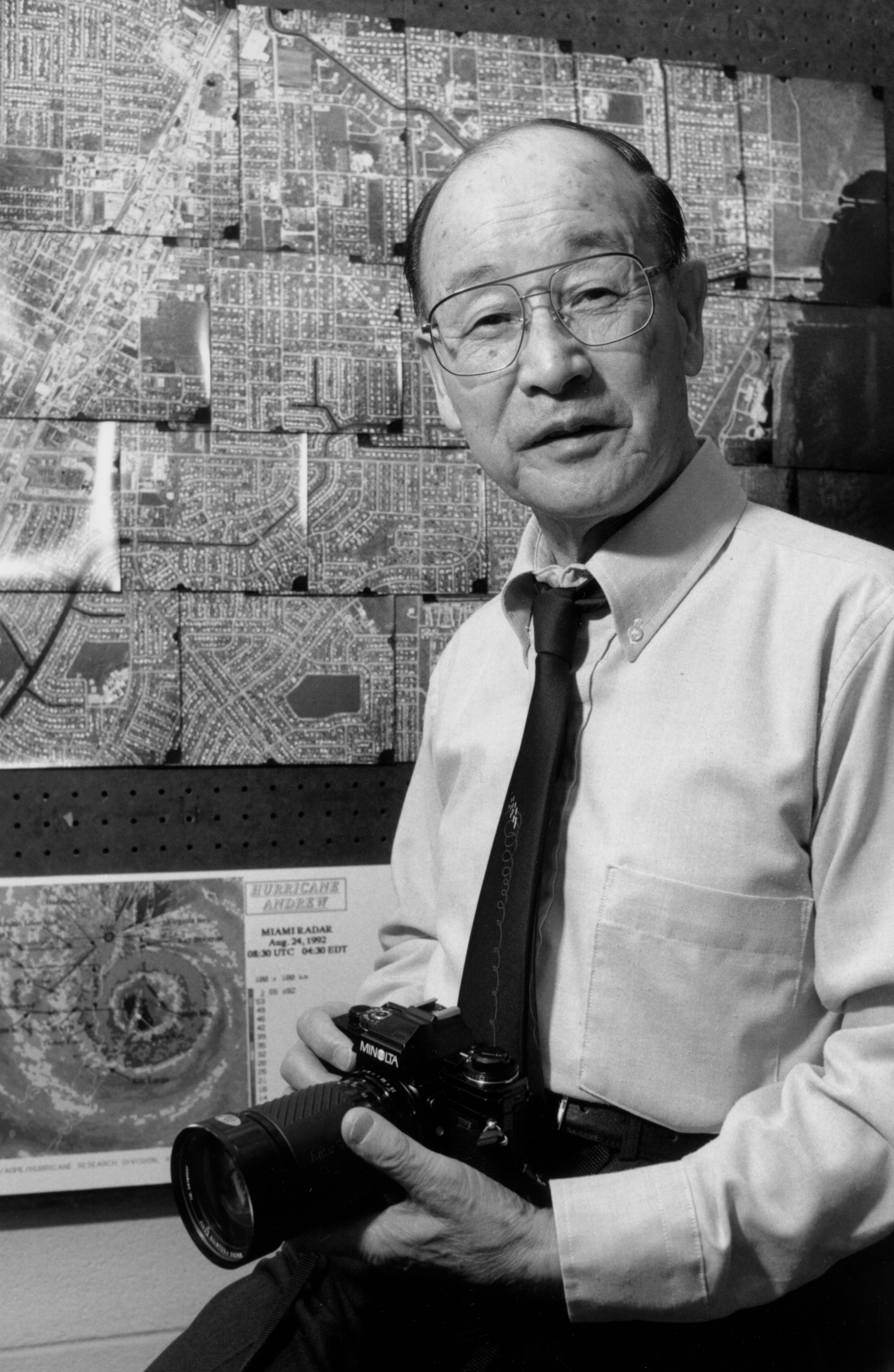Fujita, Ted (1920-1998), a Japanese-American meteorologist (weather scientist), became widely known for his studies of tornadoes . In 1971, he developed the Fujita scale, also called the F-scale, used to rate the strength of tornadoes. A modified version of the scale, called the Enhanced Fujita (EF) scale, is still in use today. On the Enhanced Fujita scale, tornadoes are rated from EF0, for the weakest, to EF5, for the strongest. Fujita spent much of his career surveying tornado damage from the air.

In 1945, Fujita was an assistant professor at the Meiji College of Technology (now the Kyushu Institute of Technology) in Kitakyushu City, Japan , on the island of Kyushu. That year, the United States dropped the atomic bomb on Hiroshima and Nagasaki , Japan, near the end of World War II (1939-1945). Fujita visited the ruins of both cities three weeks later to investigate. By studying scorch marks, Fujita determined that only one bomb was dropped on each city. He calculated the altitude of the explosions based on the damage patterns. His examination of the destruction by the bombs would later become important in his studies of storm damage.
Fujita’s meteorological work contributed to the safety of air travel. In the 1970’s, meteorologists knew that storms produce downdrafts (downward-blowing winds), but they were not thought to cause much damage. Fujita conducted aerial studies of damage from the Super Tornado Outbreak of 1974, an outburst of 148 tornadoes in the U.S. Midwest. He saw patterns of destruction that reminded him of those left by the atomic bombs in Japan. Fujita created the term downbursts for powerful downdrafts that deflect (spread out) in all directions, producing the bomblike patterns of destruction. Downbursts are dangerous to airplanes taking off, flying at a low altitude, or landing. Fujita was the first scientist to identify the microburst, a type of downburst 2 1/2 miles (4 kilometers) in diameter or smaller. Fujita’s research on microbursts led to the widespread installation of Doppler radar systems at airports. Doppler radar systems measure wind speed and direction, helping to identify microbursts and other weather hazards.
Tetsuya Fujita was born on Oct. 23, 1920, in Kitakyushu City. He earned a degree in mechanical engineering from the Meiji College of Technology in 1943. Fujita earned a doctorate degree in atmospheric science at Tokyo University in 1953. In 1949, Fujita sent his research to the renowned American atmospheric scientist Horace R. Byers at the University of Chicago . After Fujita received his doctorate degree, Byers invited him to become a visiting research associate at the University of Chicago. Fujita became a full professor there in 1965. He became a U.S. citizen in 1968, taking the first name Theodore. From 1988 until his death, Fujita directed the Wind Research Lab at the University of Chicago. Fujita died on Nov. 19, 1998.
